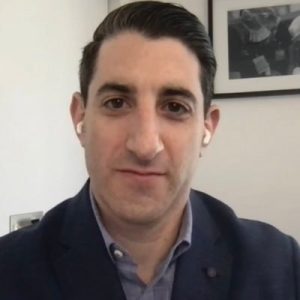Takeaway
Some patients sense that their stories aren’t appreciated. Taking the time to sit and listen to patients can build trust and begin to restore their faith in the healthcare system.

Connecting with Patients | June 21, 2021 | 2 min read
By Nick Sawyer, MD, MBA, University of California, Davis
Recently, while working in the emergency department, I sat down to speak with a woman in her late forties. After about five minutes of conversation, seemingly out of nowhere, she started crying. She told me she’d never had a physician sit and listen to her, a statement so shocking and dismaying I had to confirm that I’d heard her correctly. However, I knew exactly what she was talking about. Sure, she’d been “seen” by doctors in the past, but had she ever been “heard?”
Practicing medicine in the U.S. healthcare system is hard and getting harder. Increasing patient medical and social complexity, accelerating productivity demands, and administrative burden make modern day medical practice a far cry from what I thought I’d be doing when I enrolled in med school. But through my training and experience I’ve developed an approach to patient care that maximizes the time I have with each patient and forge a therapeutic relationship. Here are some suggestions for how to do this:
Before meeting your patient:
Of course, review your patient’s chart to get an outline of their past medical history, medications, allergies, and reason for their visit that day. Review any recent tests and/or imaging results to determine if this is a return visit for an existing problem or a new problem. To maximize face-to-face time with your patient, try to spend about three minutes reading their chart.
During your patient’s visit:
1. Ask how your patient prefers to be addressed.
2. Introduce yourself. This may seem like a ridiculous thing to mention but it doesn’t always happen.
3. Sit down at eye level with your patient.
This is a critical factor in establishing a therapeutic relationship with your patient. If there’s no chair in the room, excuse yourself and find one. It’s that important. Few things make the power disparity between patient and doctor starker than when the physician stands over the patient.
4. Be yourself.
People respond to authenticity. While at work, I’m not some buttoned up version of myself, i.e “Nick the doctor,” I’m just “Nick.”
In the high-pressure environment of the U.S. healthcare system, most physicians are pushed to prioritize efficiency over creating and maintaining therapeutic relationships with their patients. We must take the time to make sure all patients feel heard and not just seen.
This piece expresses the views solely of the author. It does not represent the views of any organization, including Johns Hopkins Medicine.

